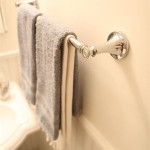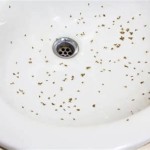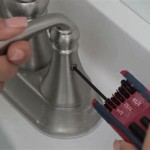What Type of Silicone for Bathroom Sink?
Silicone sealant is a crucial component in ensuring a leak-proof and aesthetically pleasing bathroom sink installation. It acts as a barrier against water seepage, preventing mold and mildew growth, and creates a smooth, seamless finish around the sink. However, the choice of silicone sealant can significantly impact the longevity and effectiveness of the seal. With a wide variety of silicone types available, understanding their properties and applications is essential for selecting the right one for your bathroom sink.
1. Understanding Silicone Types
Silicone sealants are typically categorized based on their chemical composition and intended applications. The most common types for bathroom sinks include:
- Acetic Acid Silicone (Kitchen and Bath): This type is widely available and often the most economical option. It cures with a vinegar-like odor and is commonly used for general bathroom applications. Acetic acid silicone is suitable for sealing around sinks, tubs, and showers, as it offers good adhesion to various surfaces and resists moisture.
- Neutral Cure Silicone: This type cures without emitting a strong odor, making it a preferred choice for sensitive areas. Neutral cure silicone is suitable for use in enclosed spaces, such as shower stalls, as it does not react with certain materials like marble and granite. It also offers excellent resistance to mold and mildew growth.
- Mold and Mildew Resistant Silicone: This type is specifically formulated to inhibit the growth of mold and mildew, essential for high-moisture environments like bathrooms. It is typically a neutral cure silicone with additional antimicrobial agents to prevent fungal colonization.
- High-Temperature Silicone: This type offers excellent heat resistance and is commonly used in areas exposed to high temperatures, such as around ovens and fireplaces. While not typically required for bathroom sinks, it can be considered for sealing around sinks with direct heat exposure.
Choosing the appropriate silicone type depends on factors such as the material of your sink, the environment, and your specific needs.
2. Evaluating Key Factors for Selection
Several key factors should be considered when selecting the optimal silicone sealant for your bathroom sink:
- Adhesion: The silicone should adhere well to the materials of both the sink and the countertop or vanity. Different silicone types offer varying levels of adhesion to specific materials, such as ceramic, porcelain, granite, or acrylic. Consult the product's instructions or a manufacturer's guide for details on compatibility.
- Moisture Resistance: Silicone sealants must resist moisture effectively to prevent leaks and mold growth. Look for silicone labeled as "water-resistant" or "mold and mildew resistant" for maximum protection in bathroom environments.
- Flexibility: Silicone sealants need to flex slightly to accommodate movement and expansion of the sink and surrounding surfaces. This is crucial for preventing cracks or gaps in the seal over time.
- Cure Time: The time it takes for the silicone to cure is an important consideration. A faster cure time allows for quicker use of the sink, but ensure adequate drying time for a strong bond.
- Appearance: Silicone sealants are available in various colors, including clear, white, beige, and gray. Choose a color that complements the sink and surrounding surfaces for a seamless finish.
3. Applying Silicone for Optimal Results
Applying silicone sealant effectively is crucial for achieving a durable and leak-proof seal. Here are some tips for achieving optimal results:
- Preparation: Thoroughly clean and dry both the sink and surrounding surfaces before applying the sealant. Remove any existing sealant or debris to ensure proper adhesion.
- Application: Apply the silicone sealant in a smooth, even bead along the joint between the sink and countertop. Use a caulking gun for precise application and avoid applying too much sealant, which can create a messy finish.
- Smoothing: Immediately smooth the silicone sealant with a damp finger or a specialized tool to create a smooth finish. Be sure to remove any excess sealant to avoid a messy appearance.
- Curing: Allow the silicone sealant to cure completely according to the manufacturer's instructions. Avoid using the sink until the sealant is fully cured to prevent damage or premature failure.
By understanding the different silicone types, considering key selection factors, and adhering to proper application techniques, you can choose the right silicone sealant to ensure a durable and aesthetically pleasing finish for your bathroom sink. This will help prevent leaks and ensure a long-lasting, hygienic environment in your bathroom.

Types Of Caulks And Sealants For Your Projects The Home Depot

Homeowner S Guide To Silicones And Other Sealants Pfe Technologies
Grout Vs Silicone What S Best When Renovating Your Bathroom

How To Choose The Right Sealant For Job Installer

How To Choose The Right Caulk And Caulking Tools Lowe S

Dap Silicone Max 2 8 Oz Clear Premium Kitchen And Bath Sealant 08794 The Home Depot

Maju Eys Wet Area 75g White Anti Mildew Silicone Sealant Kitchen Sink Bathroom Basin Silicon Silikon Sinki Dapur Lazada

Home Dzine Bathrooms How To Seal Around Bath Tub Or Basin
How To Silicone A Bath Step By Guide
How To Seal A Sink Eys
Related Posts







